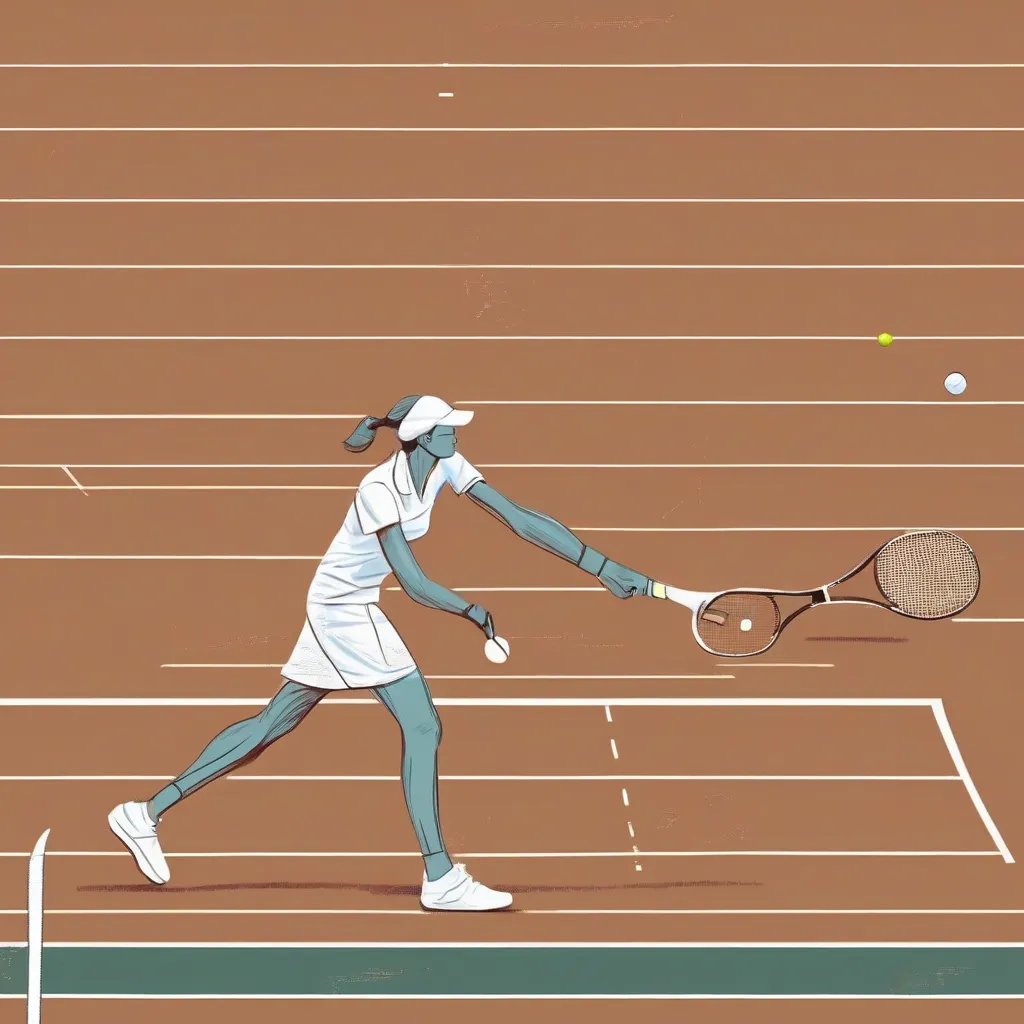Imagine this: you’re in the middle of a crucial point, the score is tied, and the pressure is on. You know your opponent’s weaknesses, but how do you exploit them strategically? The answer lies in mastering court geometry. Utilizing strategic court geometry effectively isn’t just about hitting the ball hard; it’s about understanding angles, positioning, and manipulating your opponent’s movement to gain the upper hand. This comprehensive guide will delve into the intricacies of court geometry, providing practical tips and strategies to transform your game.
Understanding the Basics of Court Geometry
Court geometry encompasses the dimensions and lines of the playing area and how you use them to your advantage. It’s the foundation of strategic play, enabling you to control the pace, dictate the flow of the game, and ultimately, outmaneuver your opponent.
Key Elements of Court Geometry
- Baseline: The back boundary line of the court. A deep shot to the baseline can push your opponent back, creating opportunities for a winning shot.
- Sidelines: The lines marking the width of the court. Hitting wide to the sidelines stretches your opponent, opening up space in the middle.
- Service Line: The line marking the end of the service area. Serving close to this line can be strategic, limiting your opponent’s return options.
- Center Service Line: Divides the service area in half. Serving down the center can be effective in neutralizing your opponent’s position.
- Net: A significant obstacle that dictates shot selection and trajectory. Using the net effectively with drop shots or lobs can disrupt your opponent’s rhythm.
Developing Strategic Court Awareness
Effective court awareness involves anticipating your opponent’s movements and positioning yourself strategically to capitalize on their weaknesses. It’s about understanding how angles and depth affect the game and using this knowledge to control the point.
Anticipating Your Opponent’s Moves
Watch your opponent’s body language, footwork, and racket position to anticipate their next move. This allows you to prepare your shot and position yourself for the return. Like a chess match, anticipate their next move and plan your counter-attack.
Exploiting Angles and Depth
Hitting angles forces your opponent to move laterally, opening up space on the court. Deep shots push them back, while shorter shots draw them forward, disrupting their balance and creating opportunities for winners.
Creating Openings on the Court
By strategically placing your shots, you can create openings and force your opponent into unfavorable positions. For example, a wide shot followed by a drop shot can be incredibly effective in winning the point.
Advanced Strategies for Utilizing Court Geometry
Mastering the basics is essential, but incorporating advanced strategies can elevate your game to the next level.
Using the Geometry to Dictate Play
Instead of simply reacting to your opponent, use court geometry to dictate the flow of the point. Force them into defensive positions, create openings, and control the tempo of the game.
The Importance of Footwork and Movement
Footwork is critical for utilizing court geometry effectively. Quick and efficient movement allows you to cover the court, reach difficult shots, and maintain optimal positioning.
Combining Power and Precision
While power can be an asset, combining it with precision is key. Hitting the ball hard without strategic placement is less effective than a well-placed shot with less power. As legendary coach, Vicente del Bosque famously stated, “Good positioning creates opportunities, precision converts them.”
Practical Tips for Implementing Court Geometry
- Practice makes perfect: Regularly practice drills that focus on hitting specific targets and angles. This will improve your court awareness and shot placement.
- Visualize: Before each point, visualize your strategy and how you will utilize court geometry to win the point.
- Analyze your game: After each match, analyze your performance. Identify areas where you can improve your use of court geometry.
- Learn from the pros: Watch professional matches and observe how they utilize court geometry. Emulate their strategies and adapt them to your game.
- Remember the fundamentals: A strong foundation in basic strokes and footwork is essential for effective court geometry.
 Visualizing Court Geometry
Visualizing Court Geometry
- Donohue, Gerry (Author)
- English (Publication Language)
- Brad Gilbert (Author)
- English (Publication Language)
- Written By: Grant Grinnell
- ISBN Number: 1514729717
- Hardcover Book
- Gavin, Julius (Author)
- Author: W. Timothy Gallwey.
- Publisher: Random House Trade Paperbacks
- Strother, Styrling (Author)
- English (Publication Language)
- Grinnell, Grant (Author)
- English (Publication Language)
- Carver, Rob (Author)
- English (Publication Language)
- Donohue, Mr. Gerry (Author)
- English (Publication Language)
Conclusion
Utilizing strategic court geometry effectively is crucial for success in any court sport. By understanding the principles of angles, depth, and opponent positioning, you can transform your game and dominate the competition. Remember that practice, visualization, and continuous analysis are key to mastering this essential skill. So, step onto the court with a new perspective, visualize your strategy, and utilize the geometry to your advantage. What are your thoughts on using court geometry? Share your experiences and tips in the comments below! We’d love to hear from you and continue this discussion. Also, check out our article on effective cross-court and down-the-line strategies for even more insights into dominating your opponent: Effective Cross-Court and Down-the-Line Strategies.









